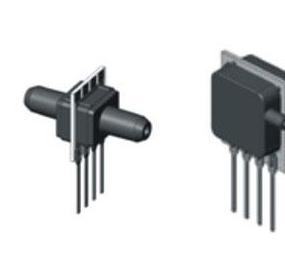
In recent years, “five changes†including intelligentization, mobilization, miniaturization, integration, and diversification have become important trends in the development of sensors. At the same time wearable applications, driverless, medical and health monitoring, and industrial control The application of the sensor has entered a period of rapid development.
Sensors and Smart Grid
Nowadays, sensors can be found in the smart grid field, and the smart grid is expected to become the largest user of sensors.
The smart sensor is a sensor with information processing function, with a microprocessor, has the ability to collect, process, and exchange information. It is a product of sensor integration and a microprocessor. The smart grid, like many smart systems, is not a single individual, but a product of many devices and technologies. The cost of establishing most of the costs required for establishing a smart grid is in the terminal power distribution system and the terminal information system of the smart grid in the power facilities. The construction of network security software and hardware will invest a large part in the sensor network and directly drive the sensor market. At the same time, in order to meet the requirements for the construction of smart grids, sensors are also moving toward the direction of intelligence, systematization, networking, and digitalization.
In the development of smart grids, the use of traditional sensors has been unable to quickly and directly measure and monitor the quality and fault location of certain power products. The use of smart sensors can be directly measured, measuring product quality indicators, and faults (such as temperature, pressure, flow).
With the gradual development of the smart grid, it will also stimulate the expansion of the sensor market space.
The development of the sensor is vast
As an electronic component widely used in modern electronic devices, the annual growth rate of the sensor exceeds 15 and it is estimated that the output value will reach 120 billion yuan after 5 years. In 2013, new social trends have emerged in the field of sensors. Companies and system-related companies in countries around the world are interested in establishing a "TrillionSensorsUniverse" society that uses 1 trillion sensors each year.
As the sensor incorporates cutting-edge technologies in the fields of materials science, nanotechnology, and microelectronics, it is a leader and foundation for a new generation of strategic emerging industries such as information technology, high-end manufacturing equipment, and new energy vehicles, and has a wide range of applications. In 2014, the global sensor market is expected to reach 79.5 billion U.S. dollars. Among them, the Asia-Pacific region has become the most potential market. The rapid increase in the size of the sensor market is bound to create a new round of battles, and this battle is facing the world.
Chinese market will become the main battlefield
The Chinese sensor market has continued to grow in recent years, with growth rates exceeding 15%. In 2012, China’s four major fields of sensor applications were industrial control, automotive electronics, communications electronics, and consumer electronics, with industrial and automotive electronics accounting for about 42% of the market share. .
According to China's "12th Five-Year Plan for China's Electronic Components", it will invest 500 billion yuan during the "12th Five-Year Plan" period, mainly focusing on the research and development and industrialization of new electronic components. These include MEMS-based sensors, gas sensors for environmental monitoring equipment, flow sensors, and humidity sensors. In addition, in the “Twelfth Five-Year Plan†of the Internet of Things published by the Ministry of Industry and Information Technology in February 2012, the development of miniature and smart sensors and wireless sensor networks was also mentioned in the key project content. The next five years will be the five years of steady and rapid development of the Chinese sensor market. With annual growth momentum of more than 30%, the Chinese sensor market in 2014 is expected to reach over RMB 120 billion.
As a main battlefield in the international battlefield, China’s development center in the Asia-Pacific region, to a certain extent, also reflects that whoever successfully seizes the Chinese market means that it can successfully land on the sensor market and it will surely be divided in the sensor market. The biggest piece of cake.
Ningbo Cijie Chemical Equipment Co., Ltd. , https://www.chemicaltower.com